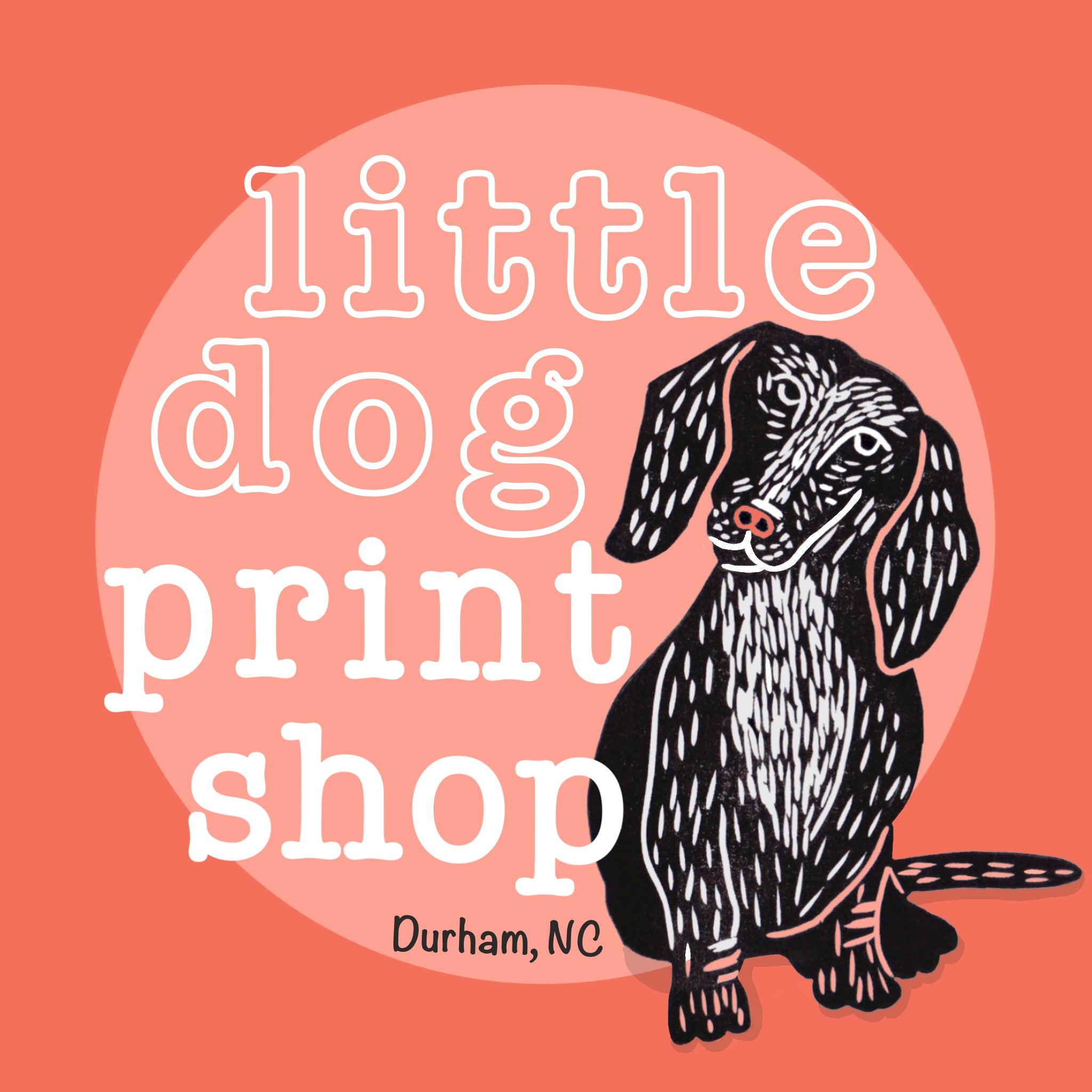Well, I lost momentum there for a bit, so it's been a few weeks since my last blog post. But now that I'm back on track, I wanted to do a deep dive into printmaking textures.
As I mentioned before in my Drawing for Printmaking post, printmaking relies heavily on texture and gradient to create shapes and forms. We often don't have the freedom to add different hues and values to our print to create depth and dimension, so we have to do this with our cutting tool and texture. Don't run away yet if I've lost you. I've got plenty of pictures to share.
First, let's start with our cutting tool. Whether you use a speedball linoleum cutting tool like I have or you invest in a different set, you'll want to be sure to have several different shapes and sizes of cutting tools. You can buy a Speedball cutting tool with 3 or 5 different cutting nibs. Each nib is a different size and cuts into the linoleum in a different way. Here are some pictures of my 5 different cutting nibs.

Each nib fits into the same speedball handle and you can switch them out as needed. As you can see, each one is a slightly different size and is numbered on the back. In the photo below, you can see that each nib is also a slightly different shape.

The nib you choose will result in differently shaped and sized cuts into the linoleum.
- The #1 nib is very small and fine and creates thin, shallow lines.
- The #2 nib is a "V" shape and create sharp, deep groves.
- The #3 nib is a deep "U" shape and creates deep, smooth cuts, larger than the #2.
- The #5 nib is a wide and shallow "u" for carving out large areas.
- The #6 nib is a knife shape for trimming down your block or carving away edges.
To be honest, I prefer my x-acto blade to the #6 nib. These are the 5 nibs that a standard speedball linoleum cutter comes with. You can find sets that only come with 3, but I do think having 5 different options is valuable.
When you get your carving tool, it's a good idea to play around and get a feel for each nib. Some carve deeper and some carve shallower. You'll need to adjust the angle at which you carve depending on the nib used and the desired outcome. A good rule of thumb is to hold your handle and nib at about a 15-20 degree angle to the linoleum as you carve.
Here are some examples of different textures and outcomes using each nib.
Below I used the #1 nib to make fine cross-hatching. I also made some lines closer together to make one area lighter. I placed other lines farther apart to make another area darker. While the #1 nib is great for fine detail, I find it doesn't translate very well to fabric because the shallow marks get clogged easily with heavy ink application.

Here I used the #2 nib to make small hatch marks in the linoleum. I love the #2 nib to make furry animal hair. Making a high concentration of hatch marks in one area creates a highlight. Spacing the hatch marks further apart results in a darker area.

Again I used the #2 nib below to create hatch marks. This time I made the hatch marks in different directions to create movement. The #2 nib is very precise and makes a deep cut, perfect for drastic lines and outlines. I find the #2 nib great prints on fabric.

Below, I used the #3 nib to gouge out the linoleum in organic shapes. The #3 nib is rounder and wider that the #2. You can see how the ends of the shape below are smoother than the ends of the hatch marks in the picture above. I like to use the shape of the tools to my advantage. Each mark was made with one motion, rather that trying to carve out a perfect dot with a smaller tool (also OK! but more work!). Varying the direction of your cuts creates motion in the final print. Spacing the marks loosely or tightly creates variation in light and dark.

Below I used the #5 nib to carve out large areas. The #5 is a very wide "u" but it is also shallow. You can see on the bottom of the print that some of the carving marks get printed because the linoleum is carved shallowly. I like this effect because I think it is part of the nature of printmaking. You could carve everything out more cleanly and deeply, but I like that some of the carving marks sometimes show through. They are part of the essence of printmaking.

In this example I used 4 of the cutting nibs starting with #1 at the top and working my way up to #5 at the bottom. You can see the variation in line weight and even line shape that you get with each nib.

Finally, below is a combination of the 4 nibs using the hatching method. I think you get the best final prints when you combining all the nibs to create one image. Using the different nibs allows you to add different texture, gradient and interest to your artwork. 
How many different textures can you see in the bee print below? How many different nibs do you think I used? Which parts are most successful? Which parts are least successful?

Happy printing!

